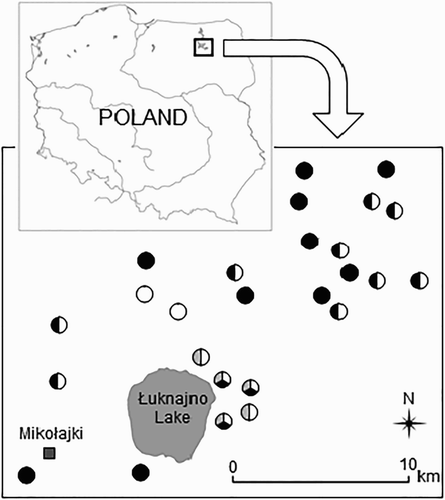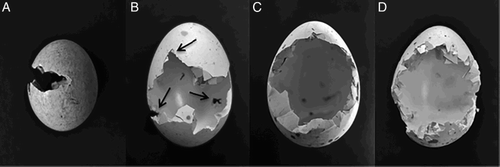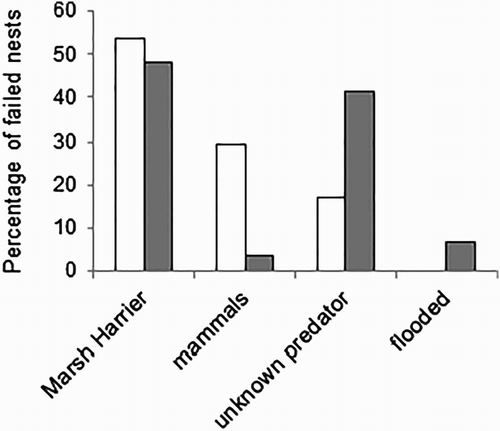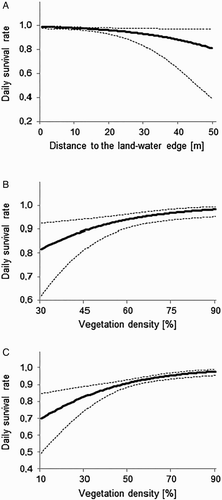Figures & data
Figure 1. Distribution of midfield ponds in the study area of the Mazurian Lakeland, NE Poland. White circles – ponds with the Little Crake nests, black circles – ponds with the Water Rail nests, grey circles – ponds with artificial nest. Circles with more than one colour represent ponds where nests of both species were found or where artificial nests were placed.

Figure 2. Marks left on eggshells by known predators (based on nests monitored by camera traps). Egg of the Little Crake (A) depredated by the Marsh Harrier, with thin, horizontal V-shaped groove. Egg of the Water Rail (B) with a deep V-shaped grooves, and specific small hole on the adverse side of the egg made by the Marsh Harrier's tip of the upper mandible (arrows). Egg of the Water Rail depredated by the Raccoon Dog (C) and by the Least Weasel (D), with rounded holes and heavily cut edges (photos by J.J.).

Table 1. Habitat variables measured at successful and depredated Little Crake and Water Rail nests (mean ± se).
Figure 3. The causes of Water Rail (white bars, n = 41) and Little Crake (grey bars, n = 29) nest failures. Presented data include both predators identified by camera traps and by marks left on eggshells.

Table 2. Maximum likelihood estimates of nest survival (NS) during standardized incubation and nesting periods for natural Little Crake and Water Rail nests.
Figure 4. DSR (solid line) and 95% confidence intervals (dashed lines) in relation to: (A) the distance of Little Crake nests to the land-water edge, (B) vegetation density in the vicinity of Water Rail nests and (C) vegetation density in the vicinity of artificial nests. All survival rates were predicted according to the top models; curves in (B) and (C) were generated from model averaged DSR values.

